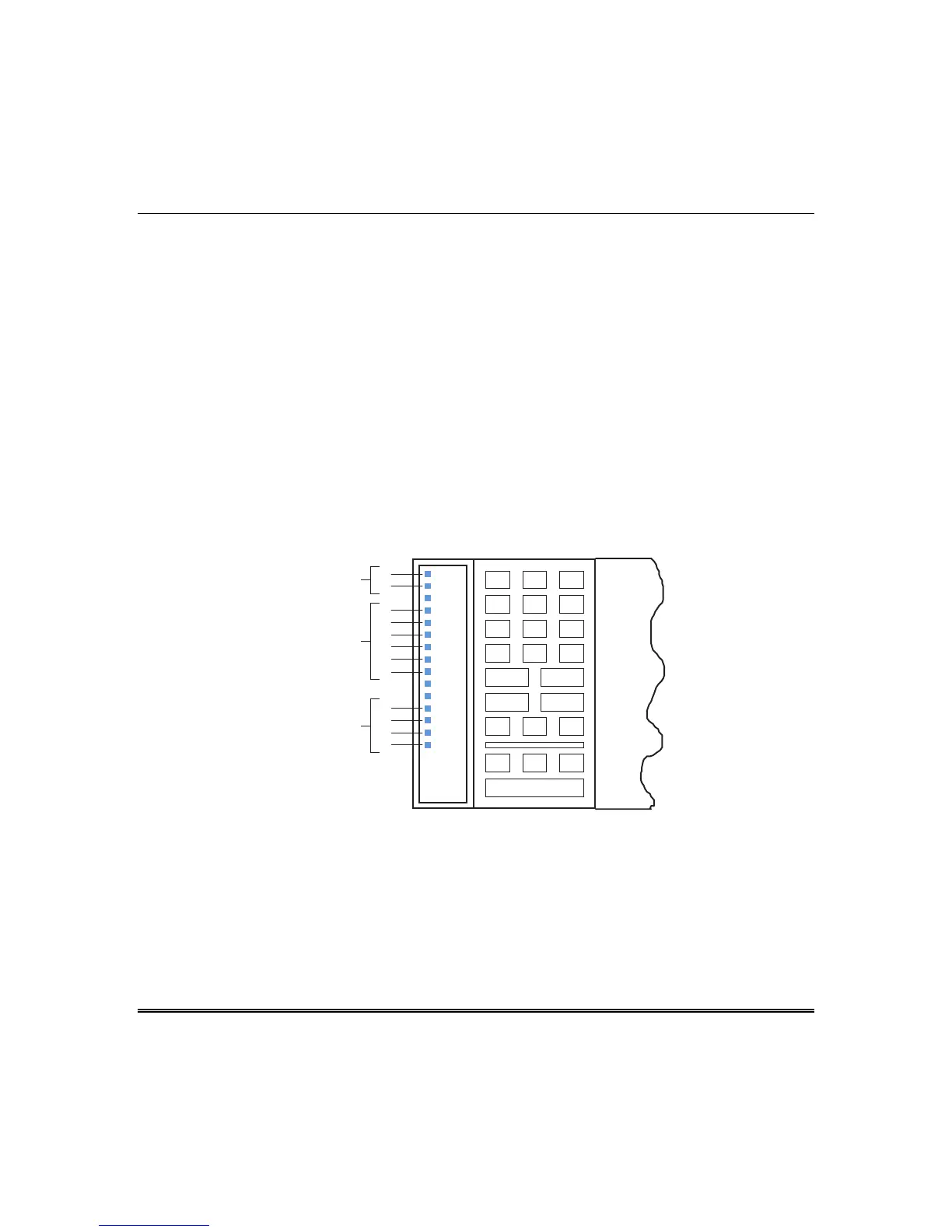OMNI-624/OMNI-624EU Installation and Setup Guide
6-2
Keypad Programming
The programming instructions and displays within this section of the manual apply to the use of an
LCD keypad. If an LCD keypad is not available, programming may also be performed using an XK-108
or XK-108L LED or an OMNI-KP fixed-word keypad. When you are using an LED or fixed-word
keypad, the displays are different and some programming procedures are different. Refer to the
following “If an LED Keypad Is Used for Programming” and “If a Fixed-Word Keypad is Used for
Programming” paragraphs for information about reading the keypad display and programming
differences.
If an LED Keypad Is Used for Programming
A LED keypad may be used to accomplish system programming by summing the value of the keypad
LEDs as described in the following paragraphs. If an LED keypad is used, the instructions are the
same as for an LCD keypad except where noted; however, you must sum the LED display to derive the
programmed digits.
WHAT YOU SEE ON THE LED KEYPAD
Program Mode = READY LED Pulsing:
As soon as you enter the Installer Keypad Programming
mode, the READY LED slowly pulses, and continues to pulse until you leave this mode. The remaining
LEDs display the submode number, question number, and location contents (data) as indicated below:
ARM
AC/LB
READY
1
2
3
4
5
6
7
8
STAY
INST
COVER
OPEN
Stay Instant
Bypass Code
*
0#
789
456
123
PAF
+1
+2
+4
+8
+16
TX LB
RF. SPVR
+1
+2
+4
+8
Question Number
Data
+1
+2
Submode Number
OMNI624-007-V0
+32
Submode Numbers = ARM and AC/LB LEDs
The ARM and AC/LB LEDs display the current submode number. In the figure above, the submode
number is the total you get when you add the values of all LEDs that are lit.
Examples: ARM lit, AC/LB off = submode 1
ARM off, AC/LB lit = submode 2
ARM lit, AC/LB lit = submode 3
NOTE:
Submode 4 cannot be displayed on an LED keypad. Submode 4 contains descriptive information
for display on an LCD keypad. Therefore, programming in submode 4 would be meaningless on an LED
keypad.

